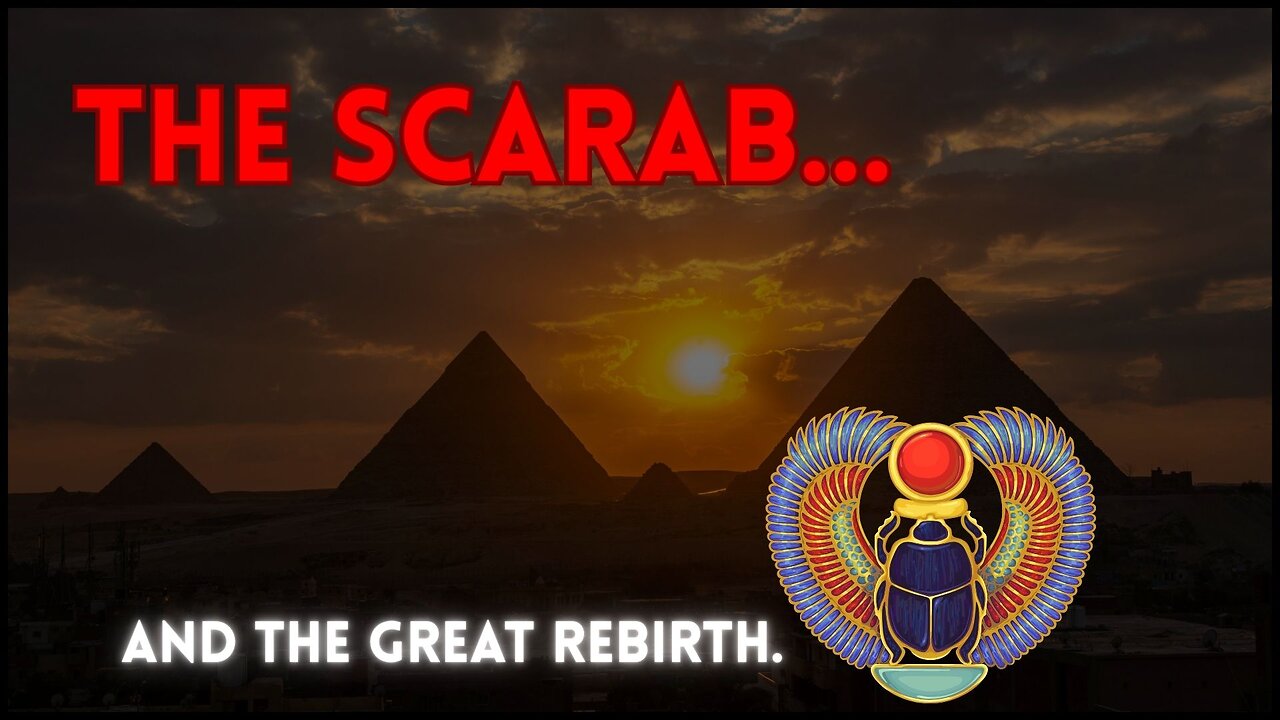Premium Only Content

The Scarab, Egyptian Mysticism, and the Great Rebirth. (the secrets of Khepri).
This video explores a foundational aspect of ancient Egyptian cosmology: the sun as a divine cycle expressed through three deities—Khepri at dawn, Ra at midday, and Atum at dusk. Each figure represents a distinct phase of solar movement, offering insight into how the ancients understood time, transformation, and the ideas of completion and renewal.
Khepri, the rising sun, is closely associated with the scarab beetle, a symbol of emergence and regeneration.
The sacred scarab, Scarabaeus sacer, plays a central role in the mythos. Its behaviour—rolling, burying, and nourishing life within a sealed sphere—was seen as emblematic of spontaneous creation. This natural process, observed in the behaviour of the sacred scarab, became a metaphor for rebirth and the unseen forces that shape existence.
The scarab’s image was often placed upon the chest of the deceased, as well as on their sarcophagi, signifying renewed vitality and the hope of rebirth.
From a physiological and symbolic perspective, the scarab’s labour may be viewed as a reflection of the great inner transformation. The dung ball, likened to the electromagnetic solar disc, resonates with the awakened bioelectromagnetic nervous system of the initiate. Through quiet perseverance, the seeker cultivates the creative force, drawing from powerful internal resources in a manner that mirrors the beetle’s difficult labour.
The video also references a classical Taoist text, The Secret of the Golden Flower, which draws a parallel between the scarab’s focused effort and the spiritual work of the practitioner. A brief passage suggests that concentrated inner attention may lead to the formation of a subtle body (the immortal fetus or inner pearl). This idea highlights the relationship between natural symbolism and energetic (spiritual) discipline.
-
 LIVE
LIVE
SpartakusLIVE
6 hours agoRule #1 - The BEST Loot is ALWAYS in the OTHER GUY'S BAG
497 watching -
 LIVE
LIVE
ThatStarWarsGirl
3 hours agoTSWG LIVE: CHRISTMAS IS COMING! Stargate's BACK & DC is Doomed?!
194 watching -
 LIVE
LIVE
I_Came_With_Fire_Podcast
10 hours agoDid Pete Hegseth Commit WAR CRIMES | No more INCOME TAX | More Fraud in Minnesota W/ Mike Caldarisie
227 watching -
 LIVE
LIVE
Adam Does Movies
5 hours agoTalking Movies + Ask Me Anything - LIVE
103 watching -
 2:12:14
2:12:14
TheSaltyCracker
3 hours agoWar Crimes ReeEEStream 12-03-25
54.8K122 -
 1:31:59
1:31:59
Glenn Greenwald
5 hours agoTrump Administration Claims to Save Hundreds of Millions of Lives by Blowing Up Drug Boats; Ethan Klein's Unhinged Vengeance & Lawsuits Against Other YouTubers: With Taylor Lorenz | SYSTEM UPDATE #553
93.1K116 -
 19:14
19:14
MetatronCore
20 hours agoHow Propaganda works on your Brain
10.2K3 -
 1:26:32
1:26:32
Joker Effect
2 hours agoWHO IS TYSON HOCKLEY?! What does the IRL streaming space look like? WHY IS EVERYONE SUEING EACHOTHER
3.29K -
 2:48:40
2:48:40
Barry Cunningham
5 hours agoLIVE BREAKING NEWS: Erika Kirk and TPUSA Have Had It With Candace Owens | Where Are The Children?
47.8K59 -
 15:30
15:30
IsaacButterfield
19 hours ago $0.01 earnedViolent Immigrant Crime Is Exploding in Australia
9.42K17